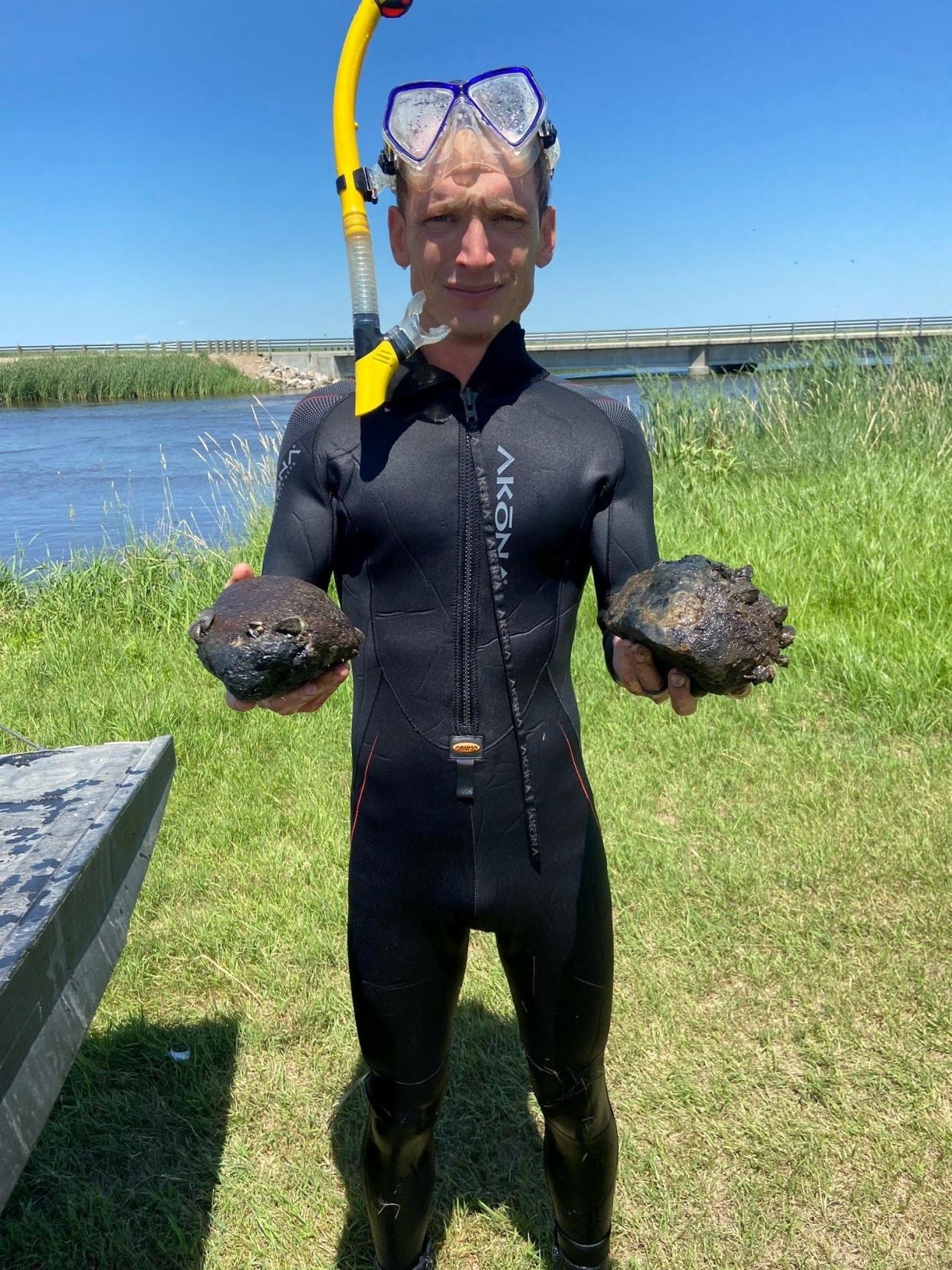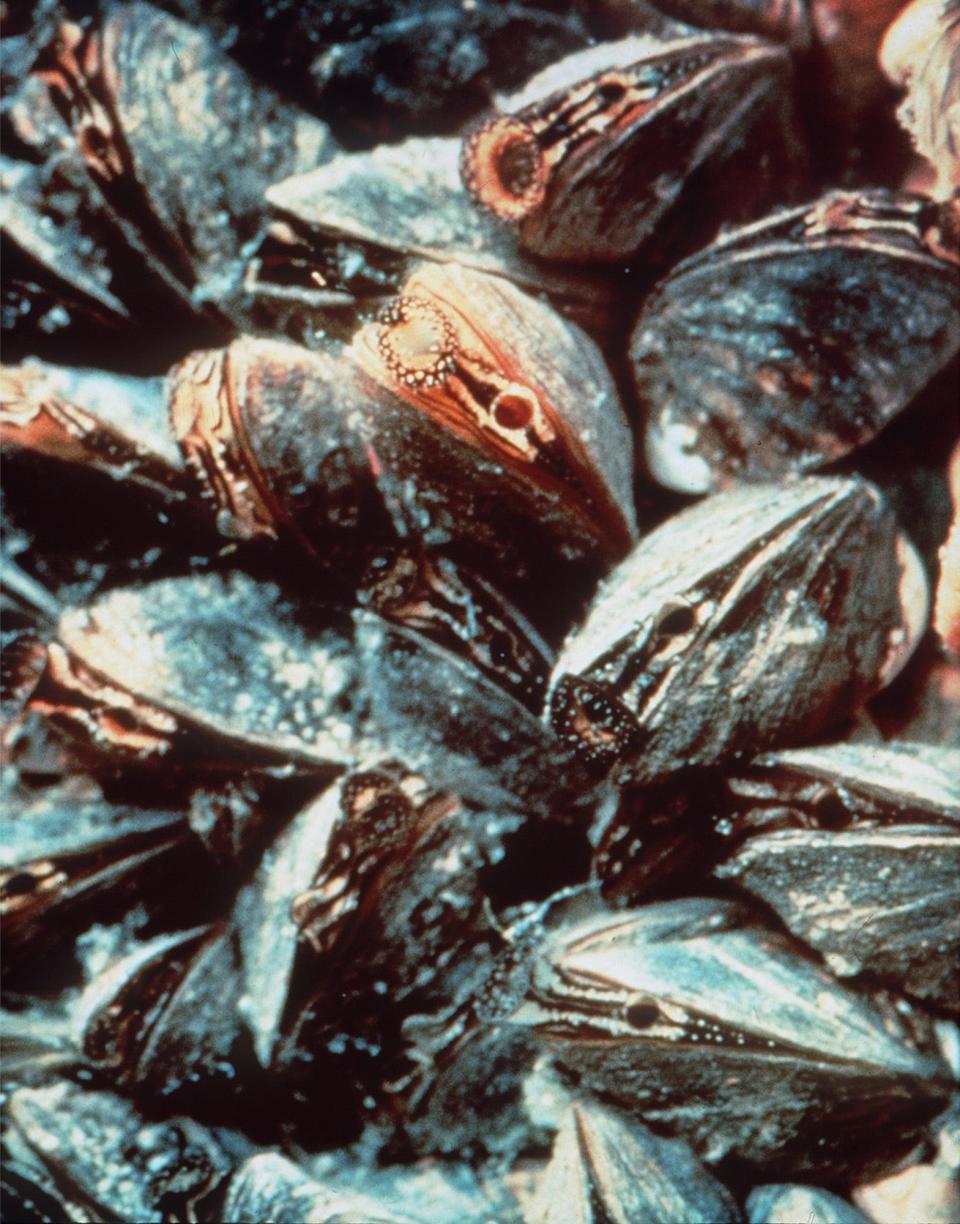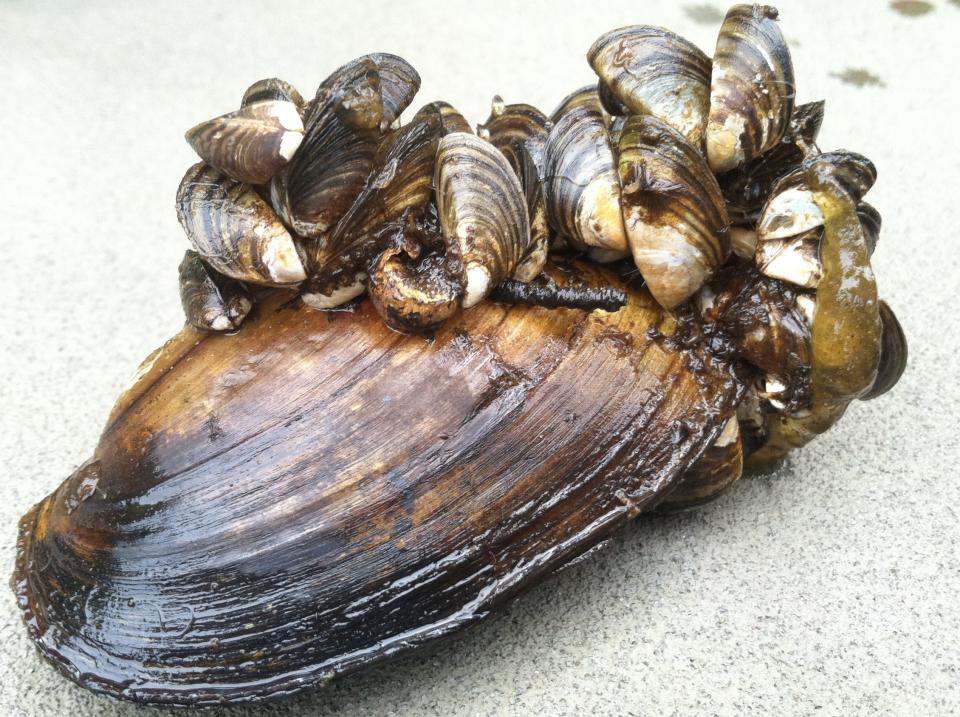Zebra mussels invade James River, Sand Lake National refuge in first South Dakota incident of 2023

For the first time in 2023, zebra mussels have been detected in South Dakota waters.
The South Dakota Department of Game, Fish and Parks announced Friday zebra mussels, an invasive species, had been found in Sand Lake National Refuge, a wildlife refuge in Brown County, during a snorkel survey.
As a result, both the lake and the James River are considered infested with the mussel.
Here's what we know about this invasive creature — and how to keep them from becoming an expensive pest for the state.
Zebra mussels found at Sand Lake National Refuge and the James River
Sand Lake National Refuge, which is home to an eponymous lake, is now the 13th waterbody to host the invasive species, while the James River is South Dakota's second major river to be infested.
South Dakota is one of the more recent breeding grounds of the spreading invasive species in the Midwest after zebra mussel specimens were found in Lewis & Clark Lake in 2015.
What are zebra mussels?
Zebra mussels are notorious for the negative impacts they have on the ecosystems they inhabit.
They get their name from the zig-zags found on their shells, and are believed to have arrived in the U.S. in the 1980s from Europe, according to the U.S. Geological Survey.
The stripy mussel, which is the size of a fingernail, filters out algae that other native species need for food and can attach to ― and kill ― native mollusks.

How zebra mussels affect people (and your wallet)
When it comes to their effect on humans, they can force governments to shell out lots of money for infrastructure repairs. According to a 2021 research paper by the U.S. Forest Service, zebra mussels cause $300-500 million in damages to power and water infrastructure (such as pipes) in the Great Lakes region annually. The U.S. Geological Survey specifically reports that they can clog water intakes.

How to slow the spread of zebra mussels
GFP said in a Friday press release it has been enhancing surveillance and sample efforts across the state to monitor for the presence of zebra mussels. The department said their Zebra Mussel Rapid Response Team, created last year, was dispatched to this infestation and "will work to notify anglers, boaters, and other recreational users of the zebra mussel presence within the lake.
"Boaters and anglers in this area can expect to see additional reminders to 'clean, drain, dry' on physical signs, in their email inboxes, and on social media," Nick Harrington, GFP communications manager, said. "We are in the peak of the summer boating season, and everyone needs to be doing their part to slow the spread of invasive species."
The U.S. Geological survey recommends the following:
Wash your boat with warm, soapy water.
Do not transport water from live wells and bait buckets from one water body to another; empty them onto land when possible and dispose of leftover bait in the trash.
Do not use zebra mussels as bait, food or aquarium pets.
Audience engagement specialist Gabriela Velasquez contributed.
This article originally appeared on Sioux Falls Argus Leader: SD's first zebra mussel infestations of 2023 detected in Brown County

